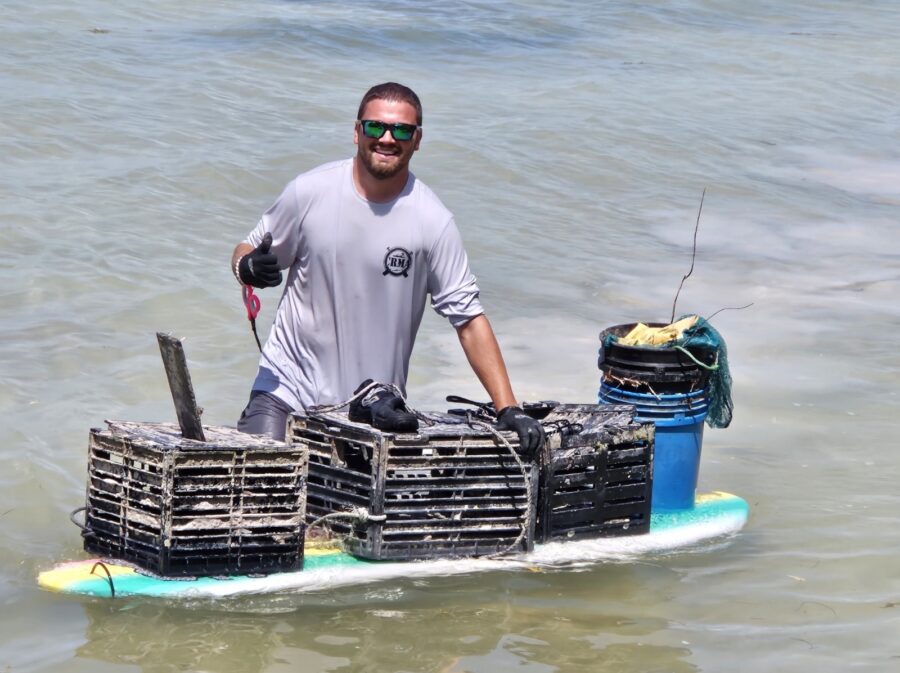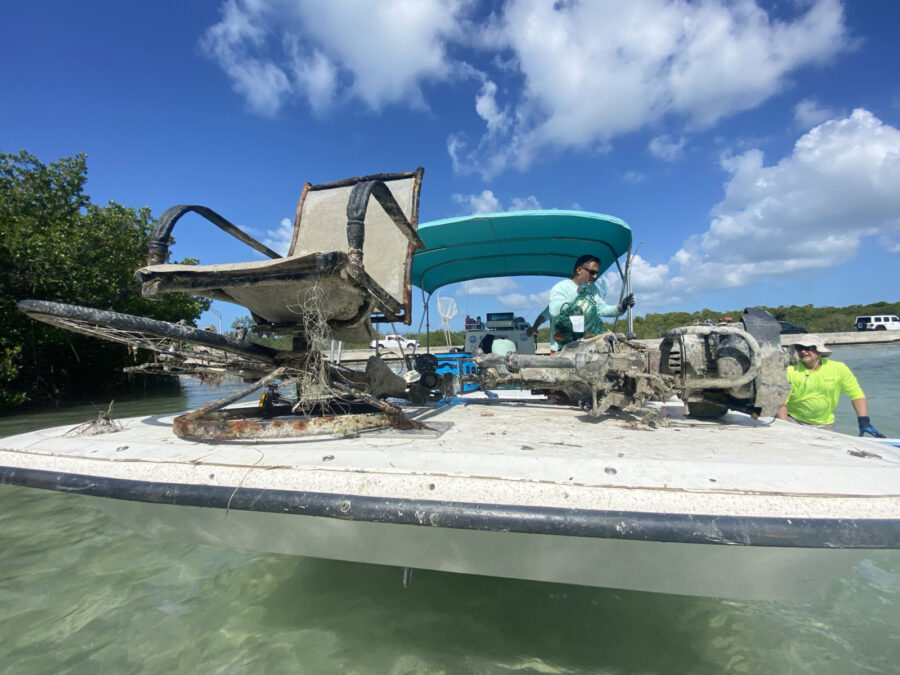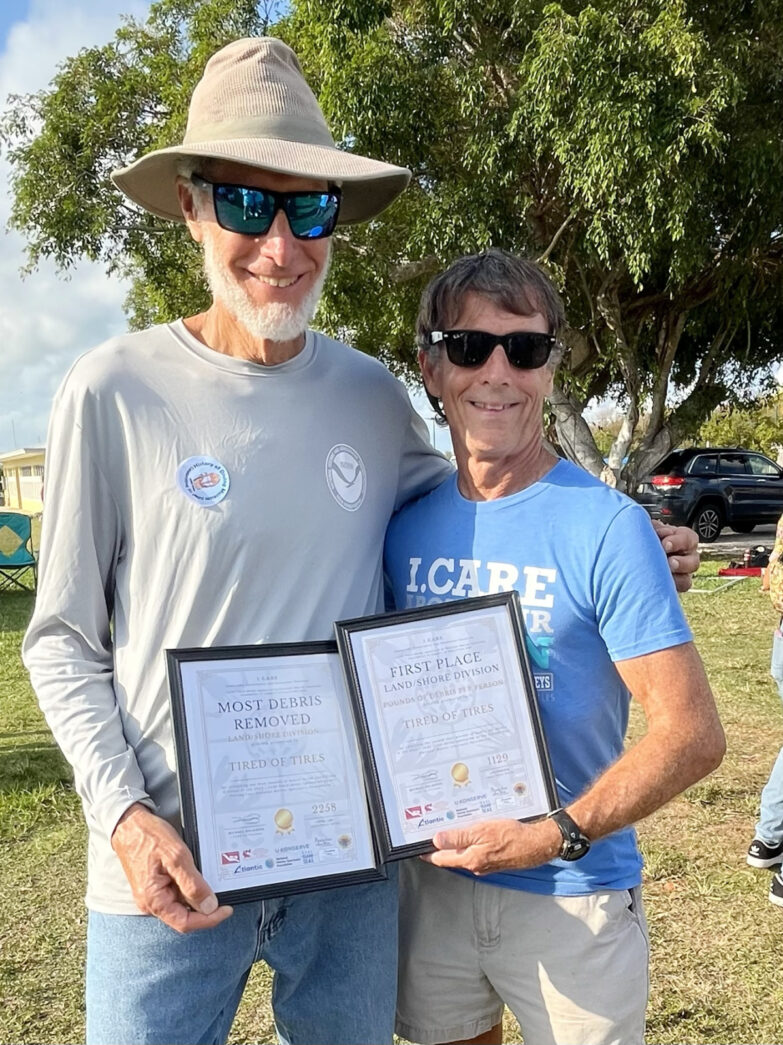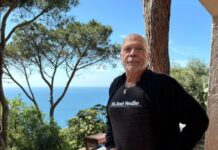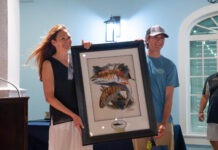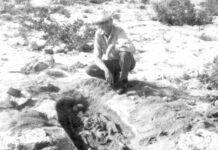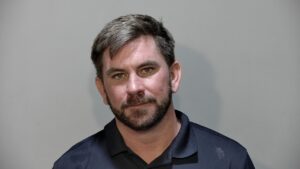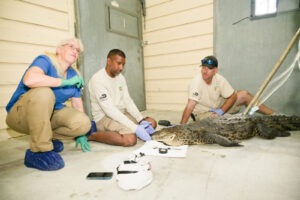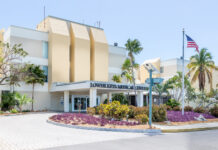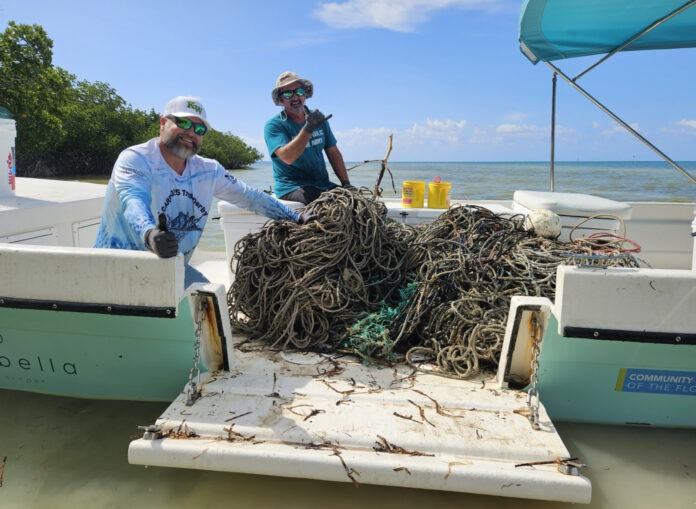
“It takes a village,” said I.CARE Co-Founder Mike Goldberg of the effort necessary to keep the Keys clean.
A village spanning the length of the Keys responded in force for the third annual I.CARE Trash Derby. New faces, healthy competition and better organization made the annual event, which took place the first weekend of May, an unexpected and smashing success.
In two days of Keyswide cleanups, 898 participants removed a whopping 36,459 pounds of marine debris from our waters, mangroves and coastlines. This surpassed last year’s record of 14,000 pounds.
“There was so much (trash), we didn’t know where to put it. We filled nine 20 yarders (Dumpsters), and we could have filled 20,” said Goldberg.
What made a difference
Trying to explain the huge jump in impact, he cited several factors:
- More enthusiasm and healthy competition among locals groups and dive shops.
- Scouting for debris by dive shops for weeks in advance.
- More land cleanups available so people could find and join more easily.
- Better event organization and communication, so people could jump on multiple cleanups.
Cortney Benson, the marine debris removal stewardship coordinator for National Marine Sanctuary Foundation, credited Keys nonprofits already engaged in cleaning up our slice of paradise with a lion’s share of the difference.
For example, Conch Republic Marine Army (CRMA) is a boat-based nonprofit that regularly brings locals and visitors to mangrove islands to remove hard-to-reach trash and storm remnants — for free. This was their first year participating in the derby, and they ended up winning the private boat division for most overall trash collected: 8,866 pounds.
“We had an absolute blast and we cleaned a lot of stuff out of the mangroves,” said CRMA executive director Carla Burns. “My favorite part was a big snotball of rope. Literally, a thousand pounds in one knot that took six guys to get out of the water, onto the boat and to the side where we cut it up in pieces.”
“Groups like CRMA, Surfrider, Reef Relief made all the difference — we leveraged their expertise, their knowledge, their ability and their infrastructure,” Goldberg added.
Whatever it takes
Many people went above and beyond. The two-man team of Bob Murray and Terry Helmers won the land division by removing 2,258 pounds, including a concrete dock that was “definitely an Irma casualty.” They sledgehammered it into pieces, smashed it up and carried it out in 5 gallon buckets that weighed around 35 pounds each. Then, they had to cross mangrove roots and coral rock to a boat anchored offshore.
“It was kind of like a crossfit thing,” Murray joked. “We wanted to get a ton, and we did.”
Benson, like others, participated in numerous cleanups throughout the weekend. She started with two dives with Captain’s Corner in Key West, followed by a land and snorkel cleanup along the seawall by the Key West Airport. Day two, she went out with Captain Hook’s Big Pine for two more dives, followed by a land-based cleanup on Indian Key Fill.
Goldberg gave a nod to the Florida Keys Tourism Development Council for their partnership and support.
“The TDC agreeing to fund a program like this — picking up trash — as a ‘tourism’ event is not what they’d normally consider, but they saw through that and supported us financially. That allowed the dive operators to be a part of it and offer free diving to visitors and locals.”
With all diving for the event completely sponsored, dive boats were fully booked months in advance. This also brought an unexpected boon to our islands: of the 534 divers, 81.5% were from out of county, and many stayed at local hotels, ate at area restaurants and contributed to this communitywide effort.
Empowering people
Benson explained why, generally, trash cleanups and debris dives work. “Marine debris is such a big and daunting topic and problem, I think lots of people feel helpless about it. But people feel more empowered when … they can come and physically remove the debris with their own hands and … can be a part of the local solution.”
“There are so many things you do in life that you don’t feel like have an impact. Here, you can see what you’ve done and the impact,” added Burns. “You feel so good.”
There’s already buzz about the 2026 derby, with second-placers rethinking their strategies, winners enjoying their bragging rights and the community feeling really connected and positive about the power of many to create real change.
Murray said, “I couldn’t be more enthusiastic about it. I am going to vote for it as the best event in the Best of Upper Keys.”
He decided to donate his half of the winnings ($1,000) back to I.CARE, and Helmers will donate his half to the Friends of John Pennekamp. Helmers has also found another dock, and the two already have plans to try to remove it.
“There will be something else,” Murray said. “Sadly, there is no shortage of stuff to clear out. But, that’s why we’re not stopping. It’s all of our responsibility.”
